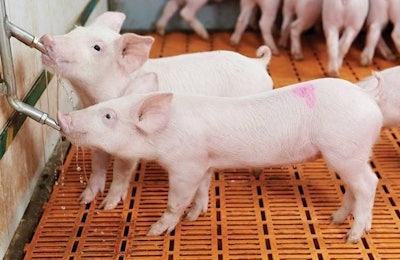
In the US, enzootic pneumonia caused by Mycoplasma hyopneumoniae (MH) is considered one of the “big three” respiratory diseases in swine, following porcine respiratory and reproductive syndrome (PRRS) and influenza.
Economic losses due to reduced growth, poor feed efficiency and extended time to market can significantly hurt the producer’s bottom line.
The challenge is that differences in the MH health status of incoming breeding stock and sows at the recipient farm can have a negative impact on health — with costly consequences.
For example, when MH-negative gilts are introduced in MH-positive systems without proper acclimation, subclinical or clinical disease can develop, increasing vertical transmission from dam to piglet.
Vaccination, medication and proper all-in, all-out movement of pigs are therefore necessary but insufficient for preventing colonization. Successful MH control must begin with acclimating gilts, as part of a comprehensive plan that includes multiple strategies.
To help veterinarians and producers get a better handle on MH control, Zoetis has teamed up with eight experts from animal health, academia, diagnostics, swine veterinary practice and a breeding-stock company to review the latest knowledge and best practices for managing MH.
The outcome is a 60-page manual, titled “A Contemporary Review of Mycoplasma hyopneumoniae Control Strategies,” which outlines a systematic, five-step approach for managing MH in today’s segregated production systems:
Read more to learn the five steps to better Mycoplasma hyopneumoniae control.















